Tags: AI Planes / Auto Spawn / AI Air Traffic / Artificial Intelligence / AI controlled
This aircraft follows all the basic AI requirements. It is specially designed for Artificial Intelligence [AI] to simulate air traffic, it is able to land and take off with extreme precision at the main airports in the game, it is also a playable aircraft, you can enjoy air collisions, target shooting or just enjoy of a more realistic air traffic.
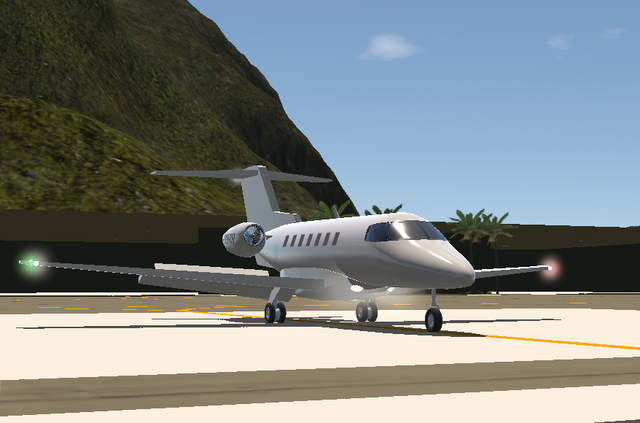
This all-white variant is available here
MAPA Aviation · 2023
Wiki:
The Pilatus PC-24 is a light business jet produced by Pilatus Aircraft of Switzerland. Following the success of the PC-12 single engine turboprop, work on the twin engine jet began in 2007 for greater range and speed, keeping the rugged airfield capability. The aircraft was introduced on 21 May 2013 and rolled out on 1 August 2014, with the maiden flight on 11 May 2015. The PC-24 received EASA and FAA type certification on 7 December 2017 and the first customer delivery was on 7 February 2018. Powered by two Williams FJ44 turbofans, it competes with the Embraer Phenom 300 and the Cessna Citation CJ4.
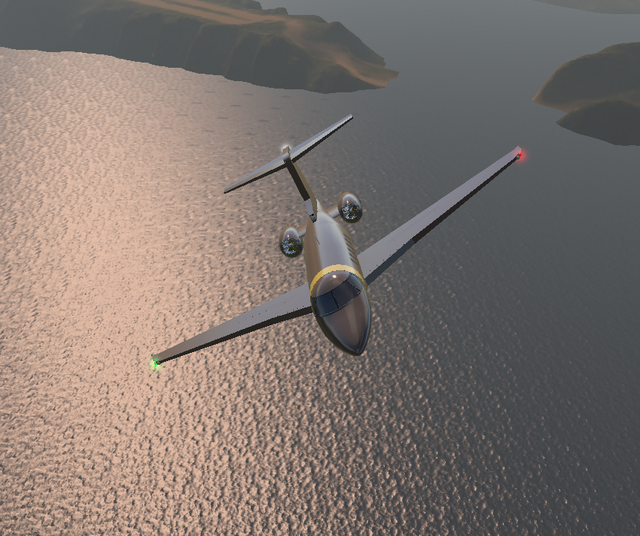
During the 1990s, Pilatus Aircraft had brought to market the Pilatus PC-12, a single-engine turboprop-powered business aircraft. As the PC-12 quickly proved to be a commercial success, Pilatus sought to follow up with a complementary aircraft and began gathering feedback from customers of the type. In response to this request, several customers reportedly expressed a desire for an aircraft that would possess both a greater range and top speed than the existing PC-12, while retaining the type's overall ruggedness and ability to make use of very short runways. Based on this feedback, Pilatus elected to pursue development of such an aircraft. In 2007, Pilatus initiated work on the program. Development of the aircraft was conducted using existing company funds. The design program was first mentioned by Pilatus in its May 2011 annual report.
On 21 May 2013, the PC-24 was introduced to the public at the European Business Aviation Convention & Exhibition (EBACE) in Geneva. At the time, Pilatus chairman Oscar Schwenk claimed the PC-24 did not fit into any existing business jet categories, and stated that the aircraft was the only one that combined "...the versatility of a turboprop with the cabin size of a medium light jet, and the performance of a light jet".
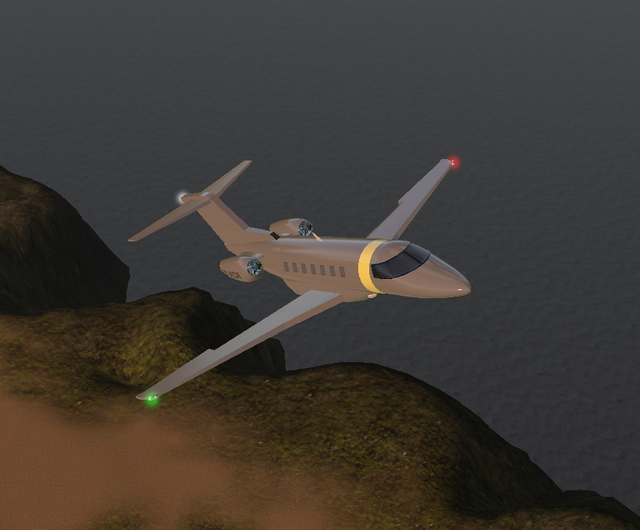
On 1 August 2014, which is also Switzerland's national day, P01, the first of the three PC-24 prototypes, was rolled out. Each of these three prototypes serve different functions in the development program; P01 is intended for exploring the flight envelope of the type, P02 is mainly for trialling the avionics and autopilot integration, and will spend much of its testing life in the US, while P03 is to be representative of production aircraft and will incorporate improvements made based upon the development work performed with the other two aircraft.
Flight testing

The first flight of the prototype had been originally anticipated to take place in late 2014, but this was delayed. On 11 May 2015, P01 conducted its first flight from Buochs Airport, Switzerland, for a total of 55 minutes. The occasion marked the start of test flights for the aircraft's two-year certification campaign. At the time, type certification and initial deliveries were anticipated for 2017.
On 16 November 2015, P02, the second prototype, performed its maiden flight, lasting for 82 minutes; by this date, P01 had accumulated a total of 150 flying hours and had performed over 100 flights. In May 2016, P01 took an brief intermission in the test program to appear on static display at EBACE; by this point, P01 and P02 had accumulated more than 500 flight hours between them. During EBACE 2016, it was commented that the program was on track and test flights had been free of surprises; during a transatlantic crossing to the US, P02 had achieved a cruise speed in excess of 800 km/h (432 kt.), which was better than expected.
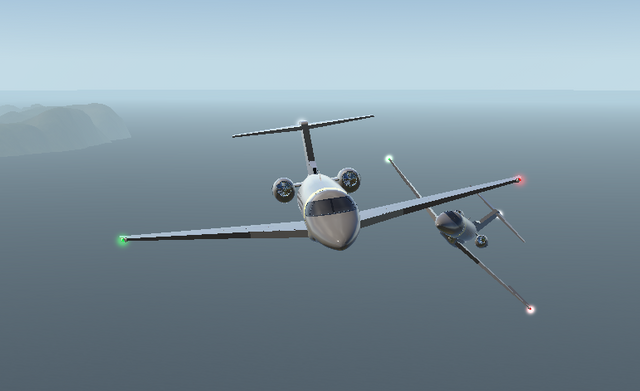
The PC-24 flight-test fleet was completed with the addition of the third prototype of P03 in March 2017; by May they had logged 950 flights and 1,525 hours. In August 2017, Williams International received type and production certification from the EASA and FAA for its FJ44-4A-QPM while the three test aircraft accumulated over 1,700h of flight tests, on schedule for certification and introduction in the fourth quarter. By October 2017, more than 2,000 hours had been flown, with the P01 prototype flying 626 times and 900 hours. The P03 prototype will complete a functional and reliability program, including 150 hours over six weeks before certification is completed and initial deliveries commence.
The three prototypes flew 2205 hours including icing conditions and very hot temperatures, outside its flight envelope, bird strikes, structural stress tests and noise tests before it received EASA and FAA type certification on 7 December 2017. Its performance goals were met or exceeded, like its maximum speed raised from 425 to 440 knots (787 to 815 km/h).
In the fourth quarter of 2018,the aircraft was certified to land on dry sand and gravel. Australian RFDS was scheduled to start medevac in 2019. Transport Canada certification was awarded on 27 June 2019. In February 2020, the design was approved for rough field operation, certifying the aircraft to operate from grass, wet earth and snow-covered surfaces, following a multiyear certification campaign.
As of February 2020, the aircraft can operate from grass, wet earth, dry sand, gravel and snow.
Production

In late 2014, an agreement between Pilatus and FlightSafety International will see the latter conduct US-based PC-24 pilot and technician training in Dallas, Texas. In May 2017, series production was under way for a fourth quarter first delivery to PlaneSense, following certification.
In December 2017, eight PC-24s were on the assembly line and 23 deliveries were planned for 2018. The first customer delivery was completed on 7 February 2018 to PlaneSense.
In 2018, 23 to 24 were planned for delivery, with 40 planned for 2019 and then 50 per year.
On 11 October 2018, its MTOW was raised from 8,005 to 8,300 kg (17,650 to 18,300 lb), from the 31st serial aircraft produced, while its zero-fuel weight (empty weight plus payload) grew by 350 kg (770 lb).
Orders and deliveries
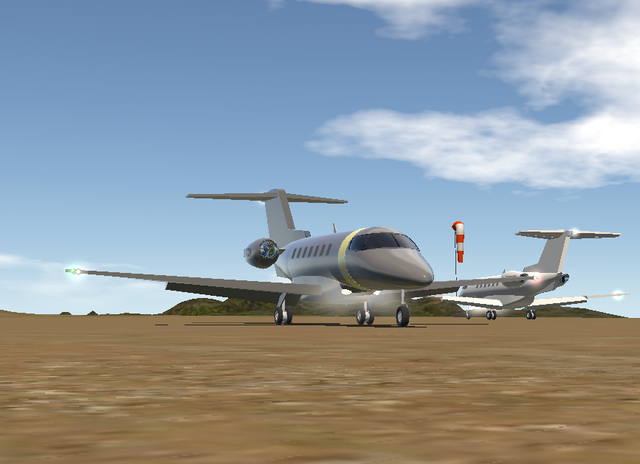
At the May 2014 EBACE, Pilatus sold the initial production run of 84 units 36 hours after orders opened. This first batch of orders is to be delivered until early 2020. Orders were to reopen after publishing the aircraft's final performance data and assessing operators' feedback. Throughout its 40-year lifecycle, Pilatus plan to produce 4,000 units. A PC-24 was ordered to transport the Swiss Federal Council. When it was certified in December 2017, it was priced at US$8.9M.
On 26 November 2018, the first of five was delivered to the Royal Flying Doctor Service of Australia, supplementing its 35 PC-12s single turboprops. Unpaved and short 856 m (2,810 ft) runways should be allowed next, and it should enter service in early 2019 as an air ambulance with three beds and an electric stretcher loader. They feature individual oxygen, vacuum and power systems for patient monitoring and support installed under a supplemental type certificate by aircraft medical interiors specialist Aerolite AG, for $13 million complete each. It will replace a midsize Hawker 800XP operated in Western Australia since 2009, a gravel kit will be available by the end of the year, and Pilatus is working on operating on narrow runways, from 23 to 18 m (75 to 59 ft).

By May 2019, Pilatus had sold 30 units and reopened the PC-24 orderbook at the EBACE show, with about 80 delivery positions made available at a price of $10.7 million each, for late 2020 and 2021 deliveries. Of these new positions half were sold within days. The PC-24 had been granted European and US steep approach certification, including for London City airport's 5.5° approach and short runway, plus dirt and gravel runway operations. Rough-field certification was approved for grass, wet earth and snow operations in late January 2020.
The 50th was delivered by October 2019, and the 100th by January 2021. In 2023, its equipped price was $12.2M.
Galery:
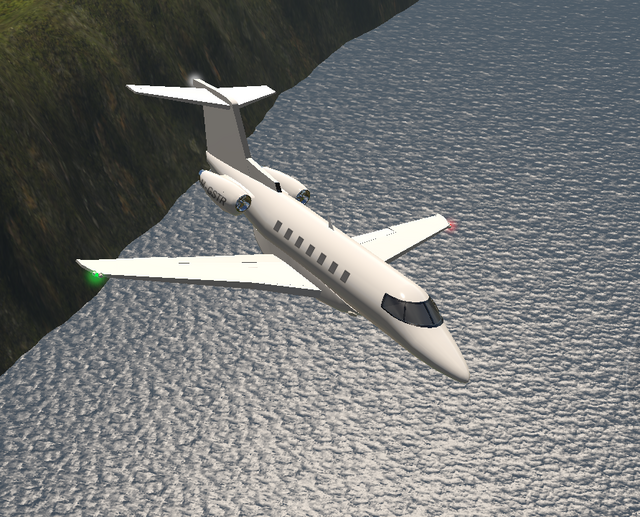
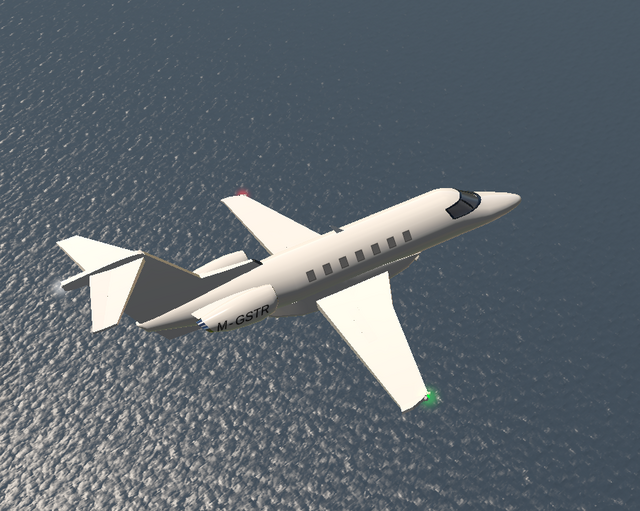
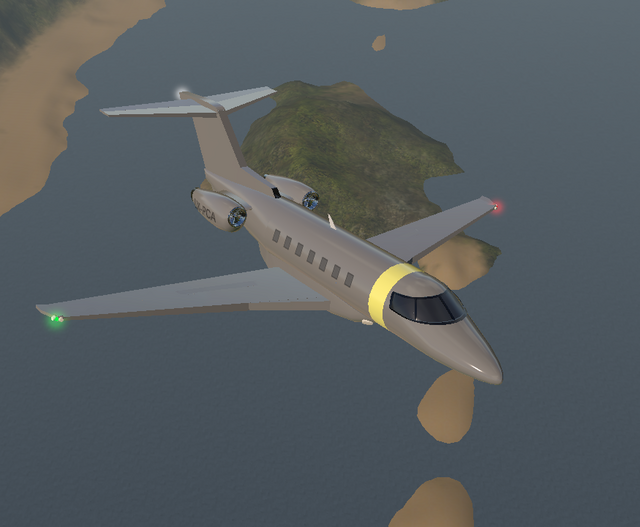
Actual Sample

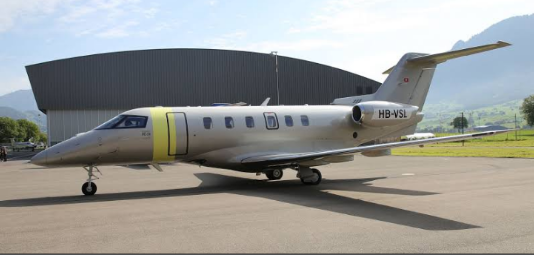
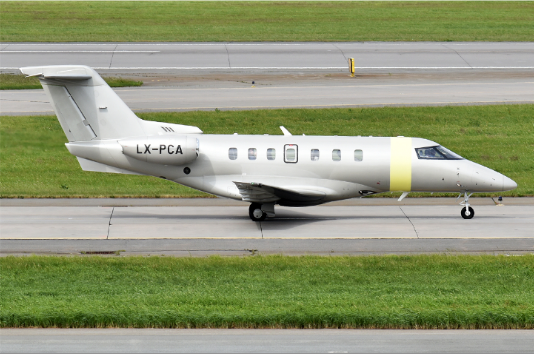
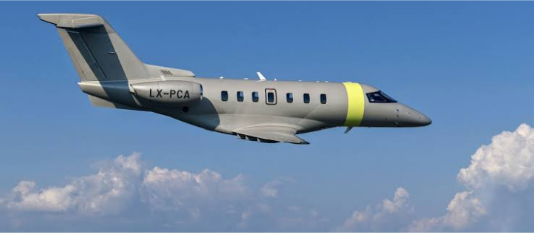
Images Credit: Flyckr
Controls: Standard
Thank you for your attention, Good flight!
Specifications
Spotlights
- WinsWings 1.4 years ago
General Characteristics
- Successors 1 airplane(s) +49 bonus
- Created On Android
- Wingspan 77.5ft (23.6m)
- Length 76.1ft (23.2m)
- Height 24.3ft (7.4m)
- Empty Weight 15,428lbs (6,998kg)
- Loaded Weight 21,927lbs (9,946kg)
Performance
- Power/Weight Ratio 6.149
- Wing Loading 26.7lbs/ft2 (130.3kg/m2)
- Wing Area 821.8ft2 (76.3m2)
- Drag Points 5556
Parts
- Number of Parts 95
- Control Surfaces 7
- Performance Cost 484

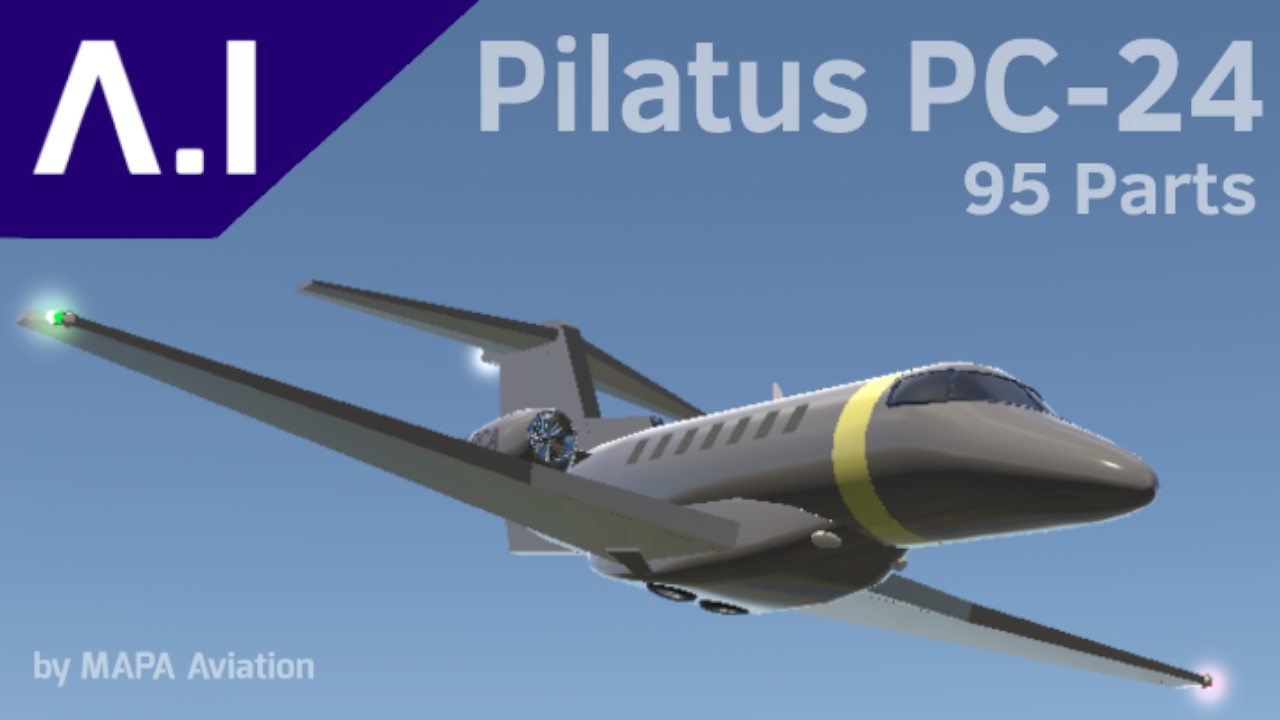
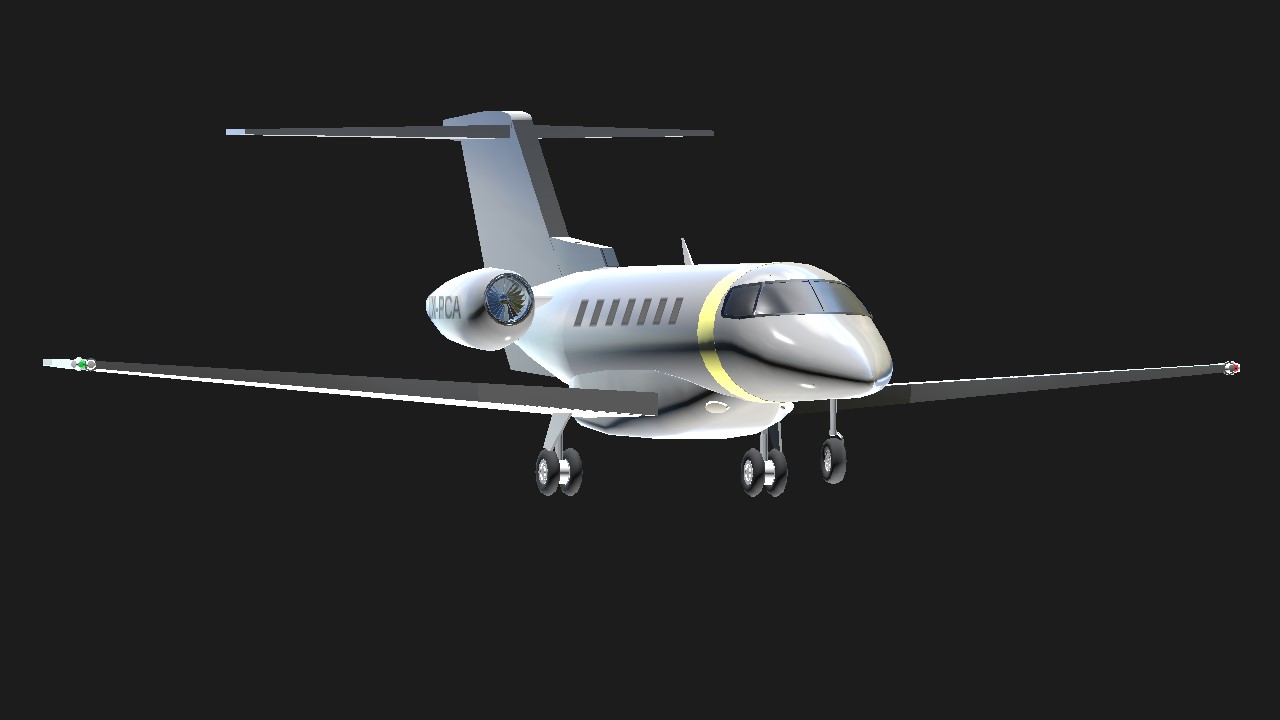
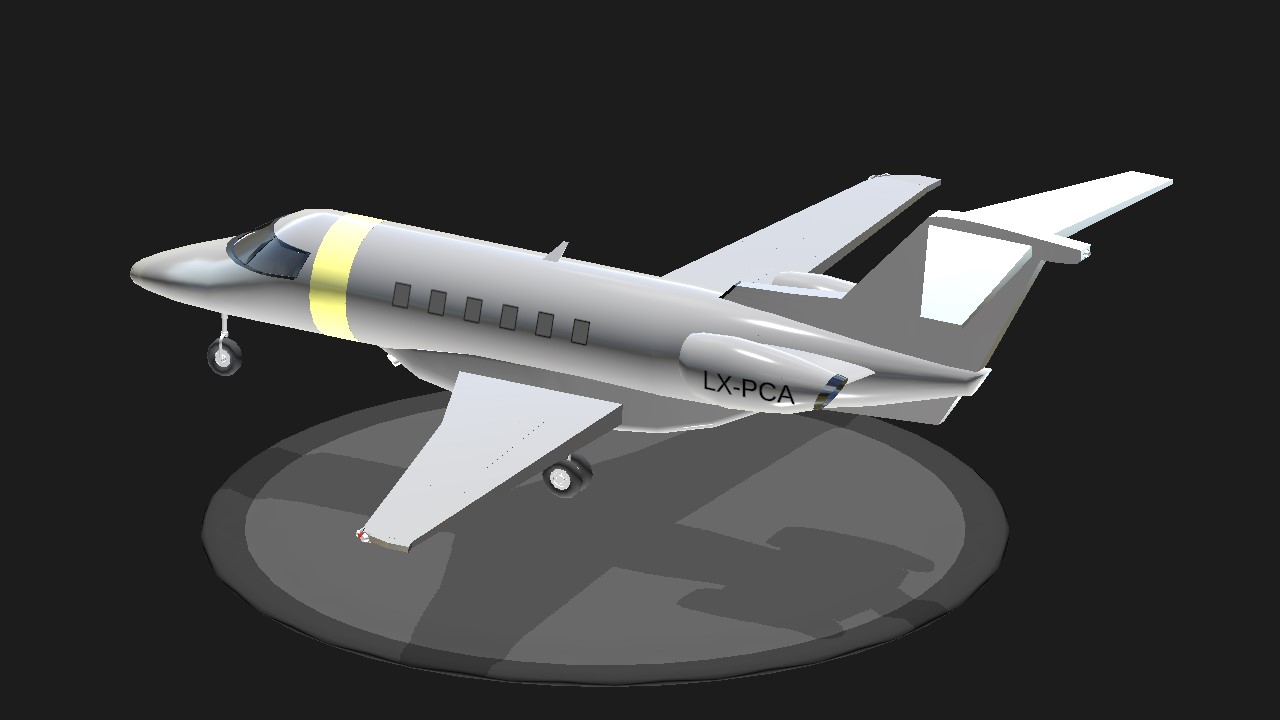

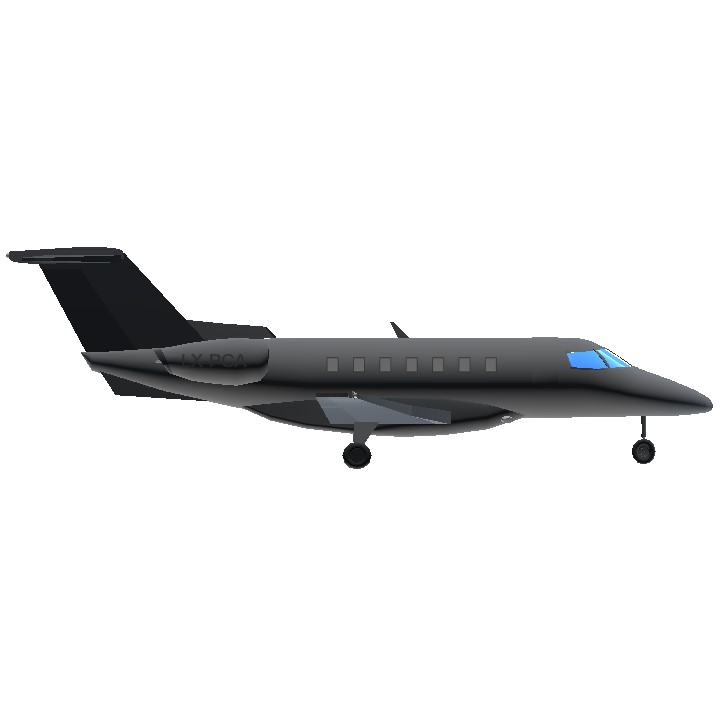

Thank you all for the upvotes and comments! :D
@MAPA Thank you very much!
@PlaneFX6 There is no rule that urges you to make thumbs similar to others, the WinsWings MAPA style challenge is full of them and none of them have been removed. You can make similar thumbs or even the same as mine
@MAPA I like the aircraft!!
@MAPA I was trying to learn how to build planes, until I managed, I would love to make a thumbnail just like yours, only in a lighter blue, and instead of saying A.I., it will say Artificial intelligence. I'm posting this comment because I don't know if you can create thumbs like others do, otherwise they remove it, but I'm not sure. (I'm making a Cessna 310B A.I.)
1st Page Bro!!!
@WinsWings Thanks!
beautiful one
I bet this will land on wright Isles North runway
I would like to see the rest of the Cessna 4XX series. You already have the 4XX base from other planes, so they should be relatively easy to make. No rush, @MAPA! Make the planes in the order that you prefer and at the time of your choosing. Also, it’s great to have you back! Welcome home!
well you didn't made those Cessna and the hawker 700a and 800a
@Atokad The Gulfstream family will take some time to arrive, I don't have much free time to build new planes
@sharkpuppet808 80% of these mentioned aircraft have already been made
Yo can u make the Gulfstream III? It’s my favorite biz jet! If u do, make the Spey engines nice and loud! No rush just saying would be cool.
Yes pls make a cessna citation longitude!
BTW nice plane!
HES BACK
Well come back MAPA and hear are some planes you can make
Cessna Citation V
Citation Jet CJ2
Citation Jet CJ3
Cessna Citation CJ4
HAWKER 700A
HAWKER 800A
Cessna Citation III
Cessna Citation X
Cessna Citation Excel
Cessna Citation Sovereign
Cessna Citation Mustang
Cessna Citation Latitude
Cessna Citation Longitude
MAPA'S BACK YESSSSSSSSSSSSSSSSSSSSSSSSSS🙏🙏🙏 THANK U LORD
@MAPA faz o
EMBRAER CBA-123 VECTOR
NEW PLANE😃😃😃
YES
I don't know if you already have them, but I'd like to see your take on my two favorite planes, Antonov An-2 and Pilatus Pc-6.
@PAULO1236 @Bryan5 Thanks friends, it's good to be back